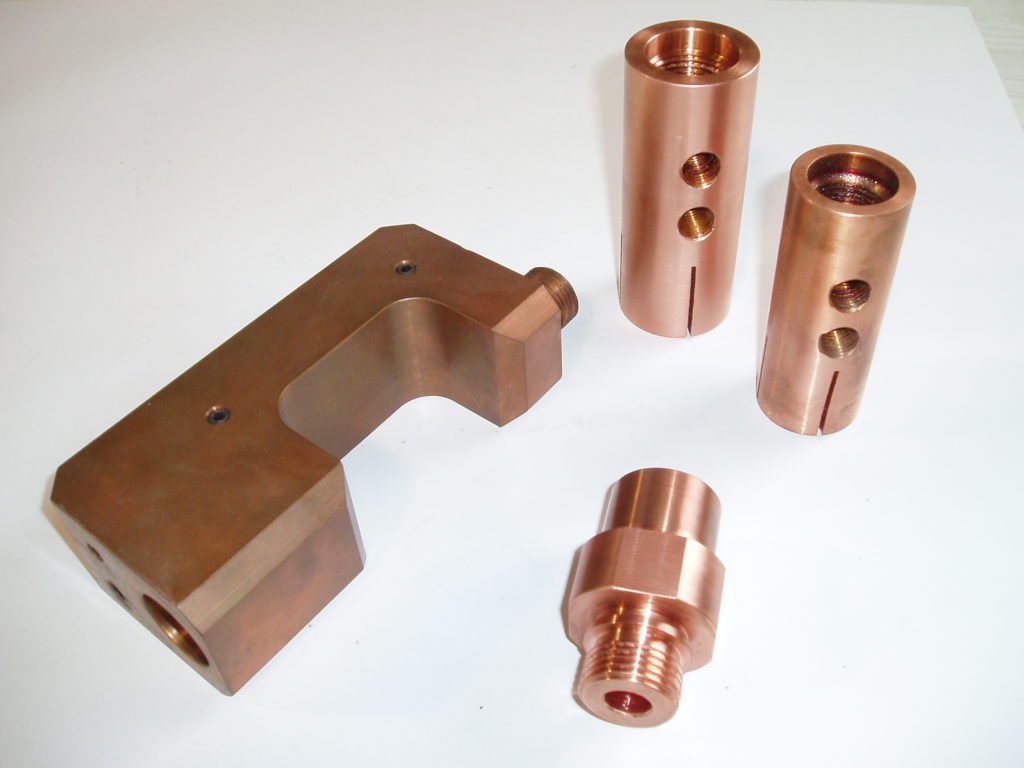Copper CNC Machining
Copper machining is the process of cutting copper into custom components and shapes. It involves milling, turning, drilling, boring and other precision operations to create copper products that meet exact specifications. Copper has excellent electrical conductivity and thermal conductivity properties, making it an ideal material for a wide range of applications in many industries including automotive, aerospace, energy and electrical.
Common used Copper Types
When it comes to copper machining, the two most commonly used copper alloys are Copper 101 and Copper C110.
Copper 101 is an extremely pure metal that contains 99.99% copper and is often referred to as “high conductivity” copper due to its excellent electrical conductivity properties. It is often used for waveguides, coaxial cables, and other electrical applications.
Copper C110 is also a highly pure copper alloy but it is not as pure as copper 101. It is more cost-effective and easier to machine than copper 101 and is suitable for most electrical applications.

The Benefits of Copper Machining
The primary benefit of copper machining is the superior electrical and thermal conductivity properties. This makes copper an ideal material for applications in many industries including automotive, aerospace, energy and electrical. Copper components can also be customized to meet specific design requirements. Furthermore, copper is a sustainable material that has low toxicity levels, making it environmentally friendly.
How to Choose a Copper Machining Company
When choosing a copper machining company, it is important to consider their experience and expertise in copper machining. It is also important to look at their quality control processes and the accuracy of the copper production. Additionally, make sure they can provide samples or prototypes before ordering in bulk quantities. It is also beneficial to find out if they offer additional services such as copper plating or copper finishing. Finally, make sure they have competitive pricing and delivery times. By doing your research and due diligence in selecting the right copper machining company, you will be able to find one that best meets your needs.
Post-processing Options for Copper Parts
Once copper components have been machined, there are additional post-processing options available. These include copper plating and copper finishing for aesthetic purposes.
Copper Electropolishing: Electropolishing copper is an electrochemical process that removes metal from the surface of copper components. It creates a smooth, bright finish and extends the life of copper parts by protecting them against corrosion.
Copper Passivation: Copper passivation is a chemical treatment used to create a protective oxide film on copper surfaces. This can help to improve copper’s corrosion resistance and extend its service life.
Copper Anodizing: Anodizing copper is an electrolytic process that creates a coating of copper oxide on copper surfaces. This improves copper components’ corrosion resistance and makes them more durable and wear-resistant.
- Copper Electroplating: copper electroplating is a process that applies copper metal to copper surfaces in order to improve their surface properties. This can help copper components last longer and better resist abrasion and corrosion.
